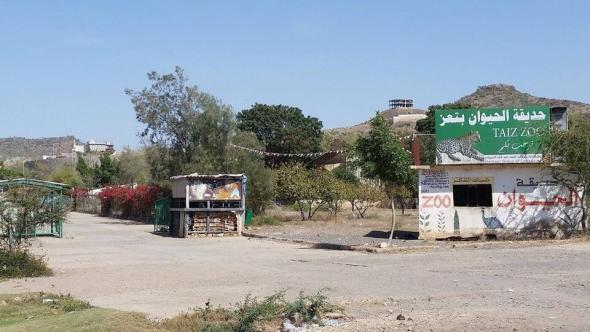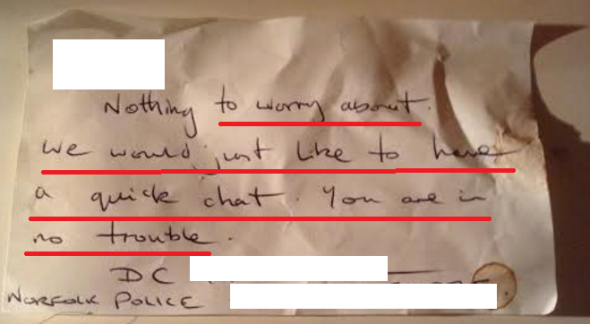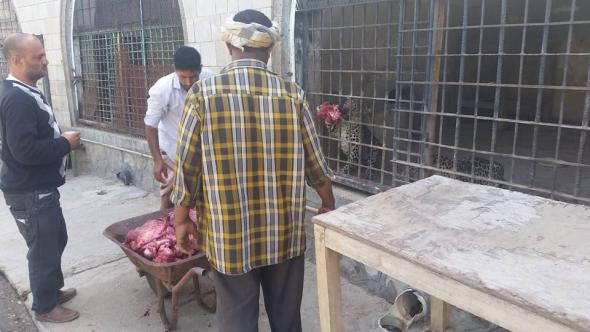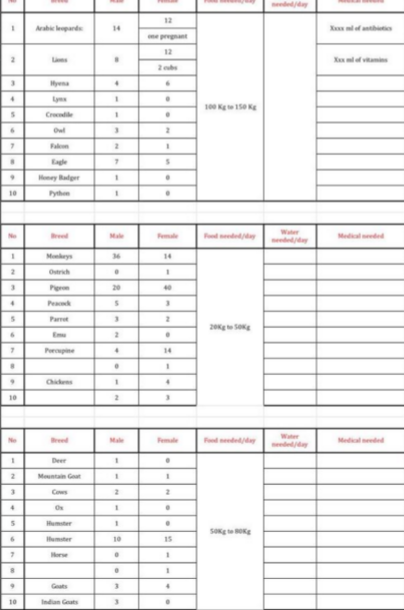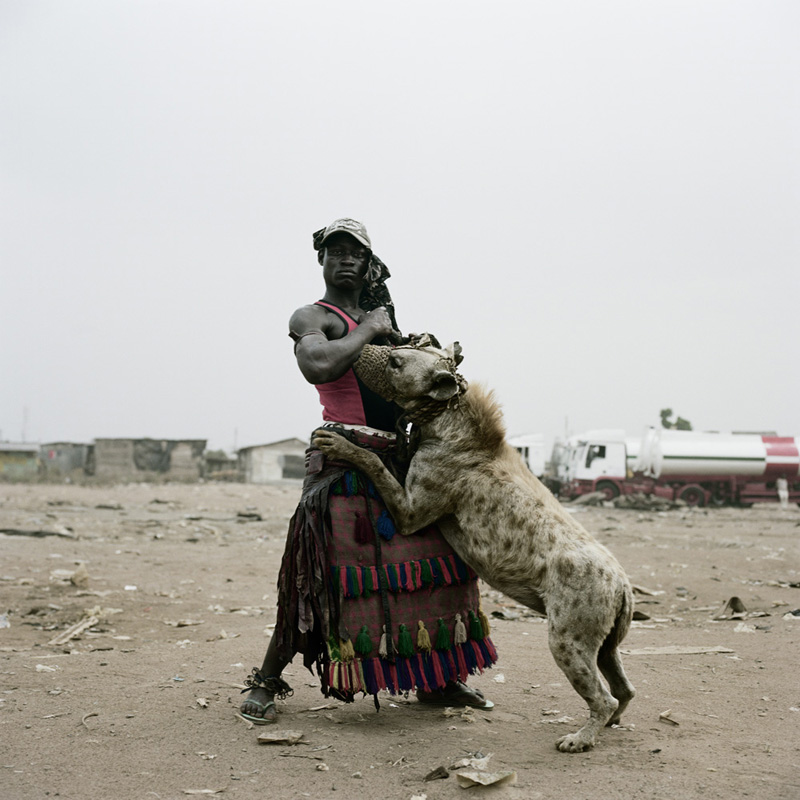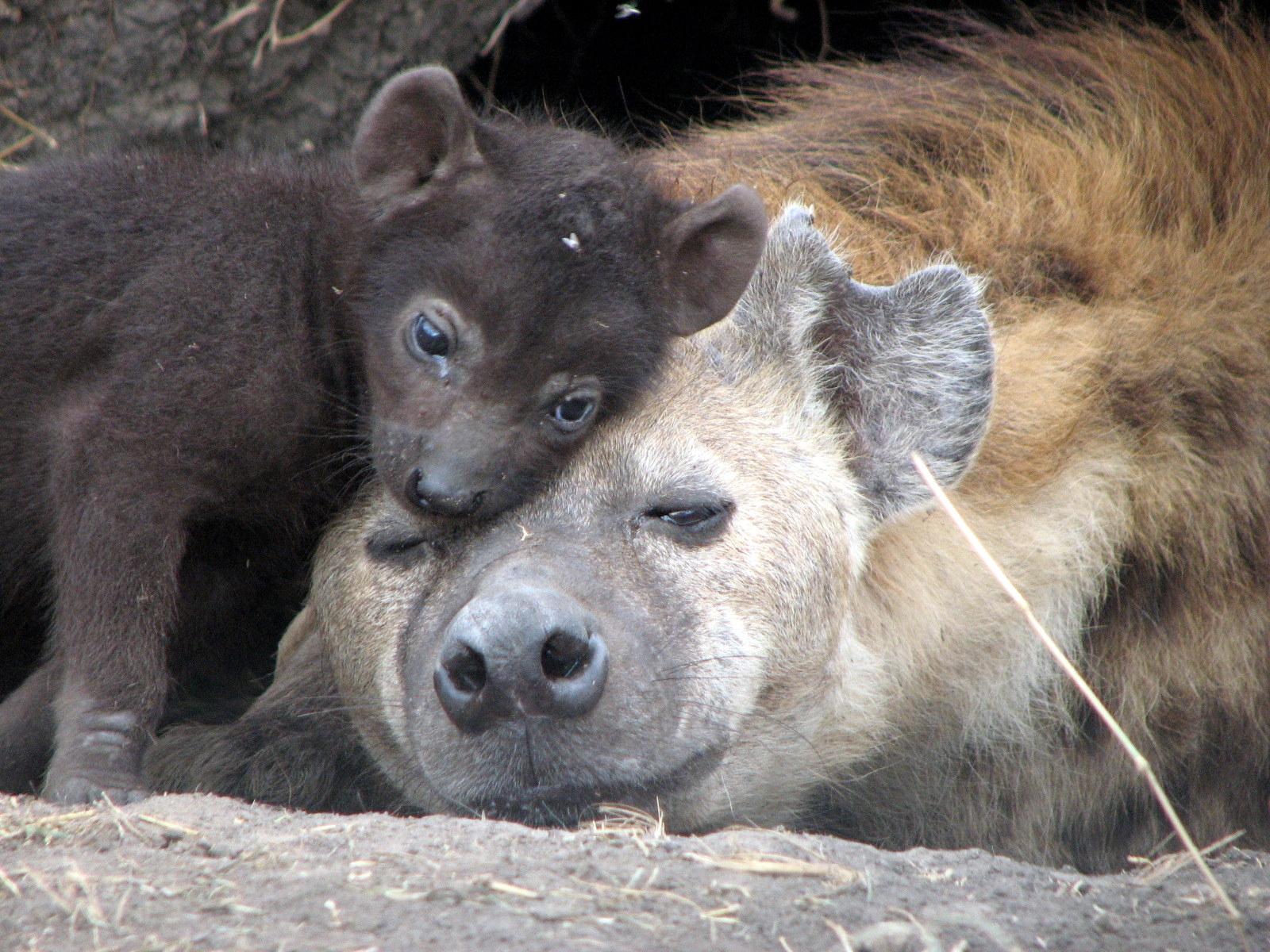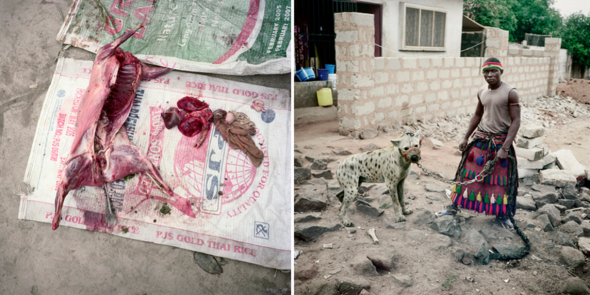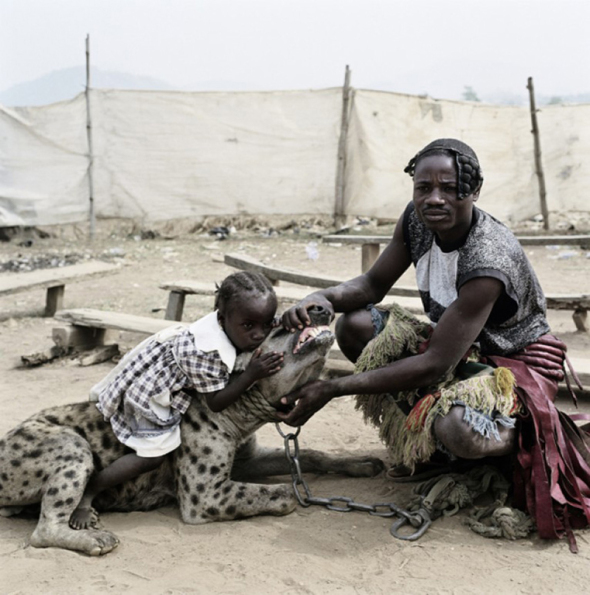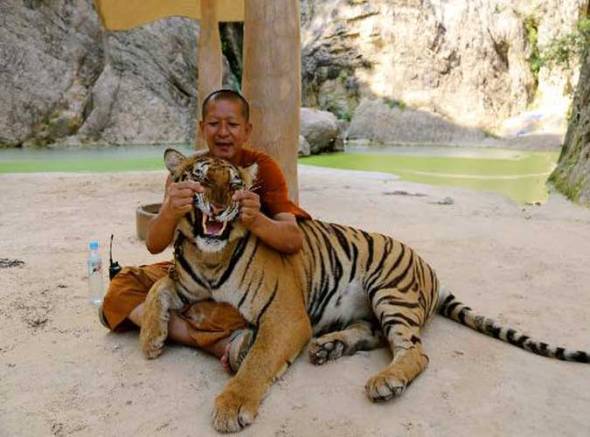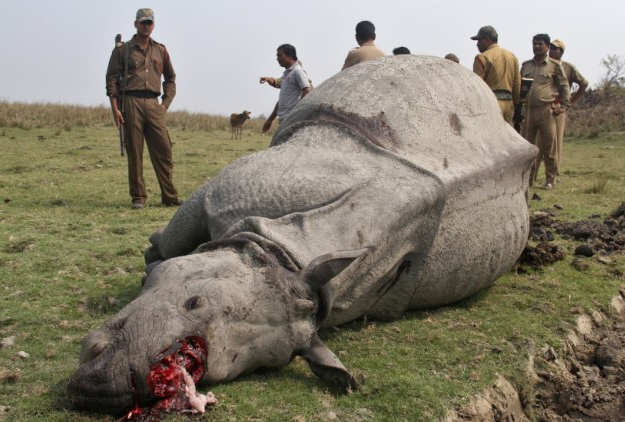TAIZ ZOO: ANTI TERRORIST POLICE & TROLLS BOTCH OPERATION.
PUBLIC NOTICE
[AID & HELP WITHDRAWN]
Wednesday 17th at 14:30hrs a member of our team was visited by the Anti Terrorist Police of the United Kingdom. The allegation that was made (and we know it was), as we hold that evidence, was in relation to our own desperate pleas to bring aid, veterinary assistant, and medication to suffering and starving animals at the Zoological Gardens in Yemen, Taiz. The allegation is listed below for your information based on a communication[s] made public on the 3rd or 4th February 2016. The complaint was picked from Twitter that we have been monitoring for some time. The officer and branch we have not identified in that communication. [See data below relating to that visit, names are withheld]. (Image: Third above party image not-related to I.A.R.F.A)
Image: Malicious complaints published on line, Anti Terror Police had to investigate.
BELOW WE’VE INCLUDED THE POST-IT-NOTE DATA RELATING TO POLITE QUESTIONING.
[Name withheld], [accused name withheld], [officer and dept name withheld]. “Hi I believe that [name withheld]”, is organizing a heavily armed gang of men, or is funding terrorists to commit terror atrocities within Yemen”. Please view the screen shots above that have derived from the complaint that forced officers to intervene despite their being no evidence whatsoever to then leave the note, and follow up with a visit Wednesday 17th 2016. Further to this under no circumstances has anyone of our team been convicted, or charged with ‘arson’, and even if they were how would that then come across to the Police as [concerning].
Image: Note from Anti Terror Police, relating to the allegations above on Twitter.
At approximately 14:30hrs, yesterday, Anti Terror Police visited a member of our team which was a polite visit, and was merely to ask questions. There was no arrests made, no action taken, nor was there any reason really for concern. However, due to the questions asked, and the mannerism of informal questioning from the Detective, related to the Anti Terror Branch, this has seriously impacted on our efforts to push help into Taiz Zoological Gardens. The reasons are set out below.
Yes we could have simply ignored this, and not have printed the above data. However when so called ‘animal lovers’ place legitimate legal operations in danger, they must be held accountable. While we fully support what the Detective Constable had to say, the DC did drop quite a few clangers. Those clangers I.e information which has intimidated a member of our team, has left us to believe [without a doubt], that the Anti Terror Police have conducted their own investigation before visiting, and may still be monitoring our systems. All of which is totally unnecessary!
Certain questions and remarks that were verbally communicated directly inform us that the Anti Terror Police have done more than “politely visited’. The visit in our opinion (was a mere gesture of letting us know they are watching us), or have been for some time. Below we have printed our response in relation to calling this project off. I.A.R.F.A of which has various skills in this area of rescue are deeply saddened.
- We believe that whatever help we offer or communications we publish, will be monitored.
- We believe that due to the interference from the two individuals that reside in the UK identified as Ms Cole and Ms McCusker that any actions we take, or data we publish could place our own team in danger, via the communication of malicious time wasting Police complaint[s]. A crime known as [Perverting the Course of Justice].
- Due to these [malicious communications], we have strong reason to believe that should we push help into Yemen, these two individuals could place peoples lives in danger via communicating their names, our project[s], or other, via further unproven, and more than inaccurate reports.
- We have strong reason to believe that should we ‘organize a team to move into Yemen’, which isn’t actually a criminal offence. The team may themselves come under Anti Terror Police scrutiny, investigation and/or questioning. Such reports could result in their names being published within media and press, which in turn could if they were allowed to move on into Yemen then seriously place their lives in danger of attack from terrorists. We simply cannot allow that, nor will we place environmental, veterinary or aid workers in danger of attack.
- Despite the fact we have been the ‘victim of false allegations’ you the [public] can still donate hereto https://www.generosity.com/animal-pet-fundraising/help-starving-animals-in-abandoned-yemen-zoo-now-2
The allegation made was indeed very cruel, and has unfortunately resulted in us pulling any help from Yemen, or even organizing via self funding a team to move into Yemen to help these very distressed, starving and sick zoo animals, (all of which is legal). The help was carefully organised of which we were deeply concerned that placing our ‘own funding’ to unknown individuals could result in that funding being sent to criminals to commit terror atrocities. Due to past issues with zoological gardens we decided to stick to our protocol of which was to visit, treat, and then find one out. All of which has been [ruined by malicious complaints and twisted so called animal lovers].
Image: Lion has since died, from starvation hence why we had to act to save others.
A meeting offline was organised today on behalf of the CEO. The CEO didn’t attend. The CEO and ourselves believe that under the current circumstances, and the fact further malicious complaints could be reported, down to innocent people being questioned. Then regrettably we have no other option but to quit this project and cease all communications to the United Nations, and further foreign individuals. Please do note though - there is a funding link above that you can send a donation to, which is UNRELATED TO I.A.R.F.A.
While we accept the current ‘concerns’, and why the Anti Terror Police did conduct an informal interview, after ‘some days of monitoring our own online activity’. There are many aid workers and rangers working in much dangerous countries than Yemen today as we speak. We know that our systems have been looked into, we even know that some of own emails and data online has been scanned by (Anti Terror Police).
Image: Yemen Zoo animals are fed when aid can reach them.
Anti Terror Police must satisfy themselves that no crime is being committed such as funding of terrorists to commit terror atrocities overseas, which we fully acknowledge, and do not blame them for conducting their investigation.
As of today we will no longer be conducting research into this zoo, nor will we be funding any operation or individuals whatsoever to move in. We are saddened that so called “animal lovers” have propagated such malicious complaints, and we are frustrated that so called animal lovers have since placed the lives of many innocent animals in harms way from real terrorists, and armed forces from Houthis and Islamic State. Not forgetting bombing raids conducted my the Royal Saudi Air Force.
Image: The zoo receives under $400 a day, many animals need help.
We are also ‘angered to the core’ that the British Anti Terror Police conducted an online investigation, monitored our systems, and “we believe placed spyware onto our systems to ensure that we wasn’t working with terrorists”. We do not under any circumstances accept that the Detective Constable simply wanted to “have a quick and polite chat”, we do accept that the constable was basically warning us that they are watching us, or would be. Although this is simply speculation, we will not, whatsoever tolerate an invasion of our privacy by UK and/or US Anti Terror Police.
Image: Fact-finding mission report: Number of animals in Taiz Zoo.
A polite email would have been suffice. further to this, the communication that was printed online clearly provides our details and whom we are (hardly terrorists), and what we were asking for. Lastly, if we were recruiting terrorists - we’d most certainly not be advertising about such monstrosities online via a pubic server, supported by over half a million people alone.
Today 18th February 03:18 local time, we now withdraw our help, and please advise the public to refrain from communicating emails to us regarding this zoo. We had only one further hurdle to overcome. Unfortunately that has been destroyed by evil, twisted and deranged cyber trolls. We simply cannot place peoples lives in danger in such ‘sensitive environments’ as explained. The zoo requires an estimated $700USD a day, however while we were prepared to fund, even send veterinary assistance within the zoo, we are not risking this, while other animals require our help. Further to this we simply cannot place wildlife crime investigations in danger of being ruined, or even delayed.
International Animal Rescue Foundation is not a terror organisation. We help many poorly equipped, underfunded, and damaged zoological gardens around the planet. We undertake various wildlife investigations providing INTERPOL, international and local police with our findings, yet we are being harassed more to say by the very people that were helping. Sadly we withdraw our help in relation to this zoo.
We apologize for the upset caused. We haven’t received an apology from the Police or what gave them [very good reasons to scan our systems, data, emails and more online].
Should you wish to fund this zoo yourself, then you can by clicking the image link below. While we ourselves support such funding operations, and have been provided with ‘more than enough data’, our main aim was to send veterinary assistants to the zoo, view what is required rather than provide funding to a cause.
You can place a donation hereto via clicking the link below in the image article.
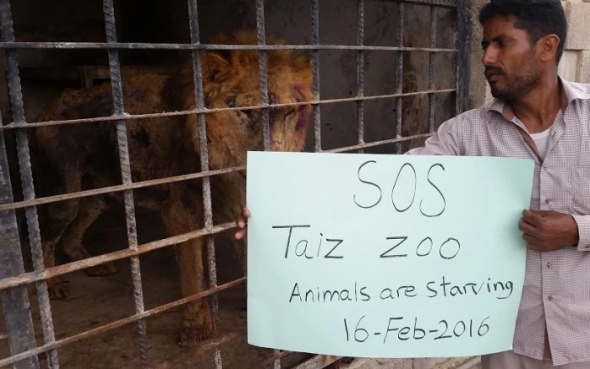
Board of Directors.
Africa: Culture, Abuse & Crime. Hyena Boys.
Abuse or Culture?
Its been a long time since I last documented on the hyena men within Nigeria. My last article was more focusing on why men feel the need to take any animal from its natural habitat, drugging the animals into submission thus in a way domesticating them. Peter Hugo was one of the very first men to document and illustrate on this rather strange and morbid behavior of both man and animals.
This Wednesdays article focuses more on whether such domestication of wild hyenas (or any animals from the wild) is considered abusive or culture and, will such a “fashion trend” spread into neighboring countries on the continent of Africa? Yes, you did just read that correctly - hyenas are seen by some people (mainly men) within Nigeria as a fashion statement over dogs. Yet the hyena is more closely related to cats and not dogs.
Brief hyena history:
Hyenas or hyaenas (from Greek ὕαινα hýaina) are the animals of the family Hyaenidae /haɪˈɛnɨdiː/ of the feliform suborder of the Carnivora. With only four extant species, it is the fifth-smallest biological family in the Carnivora, and one of the smallest in the class Mammalia. Despite their low diversity, hyenas are unique and vital components of most African ecosystems.
Within Western African tradition hyenas have been known to mingle and interact with humans. The spotted hyena was considered a “bad Muslim” who challenge the local animism that exists among the Beng in Côte d’Ivoire. In East Africa, Tabwa mythology portrays the spotted hyena as a solar animal that first brought the sun to warm the cold earth, while West African folklore generally shows the hyena as symbolizing immorality, dirty habits, the reversal of normal activities, and other negative traits. In Tanzania, there is a belief that witches use spotted hyenas as mounts.
In the Mtwara Region of Tanzania, it is believed that a child born at night while a hyena is crying will likely grow up to be a thief. In the same area, hyena faeces are believed to enable a child to walk at an early age, thus it is not uncommon in that area to see children with hyena dung wrapped in their clothes.
Image: Hyena and cub.
The Kaguru of Tanzania and the Kujamaat of Southern Senegal view hyenas as inedible and greedy hermaphrodites. A mythical African tribe called the Bouda is reputed to house members able to transform into hyenas. A similar myth occurs in Mansoa. These “werehyenas” are executed when discovered, but do not revert to their human form when killed. In all hyena’s are pretty much disliked among many traditional communities and are thought to bring a whole host of bad spirits and bad luck.
The hyena men and hyena man:
There are two groups of hyena men known. The first resides in Nigeria known as travelling performers while in Ethiopia there remains a “hyena man” rather than “men” named as Yusef. The Nigerian hyena men were first photographed by Peter Hugo. Nigerian hyena men are known to capture hyena’s, baboons and pythons of which are then tamed aggressively which we believe the use of powerful narcotics or veterinary tranquilizers are used to heavily subdue or sedate the animals removing their primal hunting instincts and natural behavior thus converting to human slavery.
Noted as travelling performers the hyena men are said to care for their animals while travelling the country followed by many whom shower the men with Naira (Nigerian currency). From observing reports it seems that the hyena men are really no different to the Monks of Tiger Temple in Indonesia. Drug and herbal concoctions are administered to subdue the animals before being captured and when on display to ensure the men are not injured or even killed by these aggressive carnivores. Peter Hugo also described how the men bathe in an unknown medical concoction of herbs as well as drinking medicinal concoctions in the belief that this will protect the men from harm when hunting and capturing the animals for later human domestication.
On hunting the hyena down with dogs the men are then said to blow a white tranquilizing powder into the face of the hyena in the hope to subdue it once the beast has been coaxed out its den. Once the hyena is subdued the men are then said to cage the animal before bringing the animal back to the local village community. Mr Hugo described that when the hyena’s are captured the hyena men then rub a unknown medicine onto the body of the hyena that is said to make the animal completely obedient.
Environmental News and Media are not quite sure as to what the medicine is or even if any such “medical rub” is administered that has any form of active properties to help subdue the animals. Its quite possible the “white powder” that is blown into the face of the animal could be “Diazepam” which would explain why the animal is then quickly subdued and for long periods of time. We don’t believe that any such skin rub that is administered to the animal would then make the animal[s] completely obedient. For such a large predatory animal to be subdued completely one would require a significantly large dose of analgesia, opiates or a stronger barbiturate to fully contain and subdue the animal. That would then be considered as abuse and something which is a violation under the Nigerian Animal Welfare Law.
Image: Hyena boys with muzzled Hyena.
Once the hyena is under the complete control of its handlers the handler will then teach the animal performing tricks and, how to live with its captive abductors (see video below). We do find this again quite baffling to take on board as hyena’s are natural born killers, very predatory and, on viewing the imagery taken by Peter Hugo it clearly shows multiple hyenas heavily chained and muzzled. So in all fairness while some people have been led to believe this is all OK its quite possible that these stunning animals are being fed a heavy dose of tranquilizers and/or depressive human or animal related relaxation medications.
Due to Nigeria’s rampant poverty the handlers were/are “allegedly forced” to parade their captive animals through the local community streets of which any raised money is said to be used to fend and care for the animals well being. In reality any money that is raised or stolen is used to feed their alleged narcotic habit and crime.
Baboons will perform a variety of tricks of which money is handed over to either animal or animals handler. Unfortunately the main earners are hyenas. Another concern raised was that many abducted animals are sold onto zoological gardens within the country that’s seen as another money maker. Peter Hugo quoted “The hyena men of Nigeria do more than simply put on a street show but they provide medicine to the public and more importantly stimulate the economy of whatever area they are in as well as act as a cultural product from the area”.
Meanwhile on the outskirts of Harar, Ethiopia another hyena man is said to exist known as Yusef. Yusef does not make money from animal performances but more admires their attention - despite these animals belonging to the wild and can at times be very unpredictable. Every night Yusef will feed the visiting hyenas with mule and camel meat. In a way these species of hyena seem to tolerate Yusef and also enjoy his company of which Yusef treats them like domesticated dogs. Many people in Harar are said to actually worship the hyena and treat them with the utmost respect which could explain why they’re not kept as performing animals but left to live how they should within their natural habitat.
Crime and exploitation:
Moving back to the Nigerian hyena men local press and media that picked the story up few years back were quoted as stating “that these men were bank robbers, bodyguards, drug dealers and debt collectors”. Between March 7th and 15th 2015 a local man named as Mr Mohammed Nafiu aged 27 who has been “suspected” of being part of the hyena men group was arrested and charged after using baboons and pythons to rob people within the country.
He pleaded not guilty to the charges. However, the prosecutor, ASP Eranus Nnamonu insisted that the accused committed the offences on March 7 and 17 when he terrorised the residents of Ogba and Ijaiye in Lagos.
He said Mr. Nafiu, armed with a fully grown baboon and a venomous snake, also terrified a crowd waiting to board a bus at Ogba Bus Stop. Mr. Nnamonu said the accused isolated a witness, Joshua Odogwu, and thereafter obtained N57, 000 from him.
“The obviously terrified victim dropped all he had in his bag along with N57, 000 cash, which the accused collected,” he said. In addition, he said the accused had on March 17 visited the shop of a man, Henry Ugwuokoh, and forcefully obtained N230, 000. The offences, Mr. Nnamonu noted, contravened Sections 166, 294, 295 and 409 of the Criminal Law of Lagos State, 2011. In her ruling, the Magistrate, Abimbola Komolafe, granted the accused bail in the sum of N100, 000 with two sureties in like sum and adjourned the case to June 18 2015 for trial to be held tomorrow.
Recently back in 2014 a local documentary-maker Tarryn Crossman won the award for Best Documentary Short for Hyena Boys at the California International Shorts Festival. Despite much criticism and debate from Carte Blanche, 50/50 and environmental and animal welfare groups the “award winning short film” was aired. Since Peter Hugo’s capture on the hyena men now known as the hyena boys, countless film, documentary producers and organisations have visited the group of men headed by Baba Mohammed that is in our eyes creating the wrong image and sending the wrong message to many people that abducting a wild animal to generate money from street performances is OK?
As explained its not just hyena’s that are taken from the wild and held in solitary confinement. Baboons, reptiles, snakes and small monkeys are also removed illegally from the wild. Furthermore the animals are also sold on to individuals within the communities as “pets” or as seen in the image below killed for meat to feed the locals.
Image: Hyena meat carcass and Hyena boy with muzzled hyena.
Yahaya one of the Nigerian, Lagos “hyena men” was quoted as saying “Any animal that people want, we can get for them,’ said Yahaya, who claims that they have supplied hyenas, pythons and other animals to zoos in Nigeria, Cameroon, Burkina Faso and Benin. ‘A mature hyena is sold for one hundred and fifty thousand naira, but a cub is more expensive at two hundred and fifty thousand naira. This is because a cub can be trained. An adult baboon goes for fifteen thousand naira, a young one for eight thousand. A python goes for eight to ten, depending on the size.’”
What has turned in to a street performing activity to make money to “allegedly” feed the impoverished has clearly been heavily exploited too. Capturing these stunning animals from the wild to perform or to sell on as meat or pets is wrong and any film production team that honestly believes this is totally OK are foolish and supportive of animal captivity, abuse and, exploitation.
The entertainers have also been accused by the Nigerian police of using the animals to threaten or intimidate members of the public into parting with money or possessions. In June 2004 a report in Lagos newspaper This Day claimed that an armed ‘gang who used a hyena and a monkey to rob their victims’ had a shootout with police. The report can be read below:
June 2004: Four armed man suspected to be from the group “hyena boys” held up a bank with baboons and hyenas.
Four armed gang who used a hyena and a monkey to rob their victims in Katsina State have been arrested by the police after a gun duel in Bichi, headquarters of Bichi Local Government of Kano State. According to a statement made available to newsmen in Katsina, the robbers who were seven in number went to Kankia market in Kankia Local Government of Katsina State to display with the animals while they robbed their victims of N66,000 during their operation.
Shortly after their operation, the statement added, the robbers took to their heels and they were chased by the police down to Bichi in Kano State where they engaged the police in a gun battle which led to the death of two of the robbers. During the battle with the police, the gang let off the hyena and monkey to fight with the police during which the animals bit one of the policemen who is now lying critically ill at the Katsina General Hospital.
Two of the robbers were killed while four of them arrested on the spot. The police had however killed the two animals during the fight in Bichi. Meanwhile, two robbers have been arrested by the police in Funtua for allegedly burgling the home of the former Minister for Special Duties during the Abacha administration in the country Alhaji Wada Nas.
The hyena boys are known to deal heavily in narcotics which the film crew producer Tarryn Crossman confirmed on visiting the hyena boys back in 2014. Tarryn Crossman stated that on entering the camp they walked into a large camp populated with many people and cannabis laying everywhere. Tarryn Crossman’s own words “We thought we were going to die”.
Captive cruelty and abuse:
For years International Animal Rescue Foundation Africa has documented on animal abuse and captive cruelty however, nothing can be more cruel and abusive than this. Abducting wild animals from their natural habitat with vicious dogs, using hypnotic medications to subdue the animals and beating the animals should they not do what their masters demand. It really baffles us as to why any such film or press agency would even document on such so called traditions knowing their abuse that goes on within camp and outside of camp.
Wild animals in captivity are often anxious about being cooped up. And the stressors of social animals can sound strikingly similar to the popularity concerns of high school girls. Mark Wilson, a neuroscientist at Yerkes National Primate Research Center of Georgia’s Emory University, studies captive female rhesus macaque monkeys, housed in groups as they would live in the wild. The monkeys naturally form a hierarchy with some females dominating others, and subordinates enduring harassment and a general lack of control.
Furthermore and even more worrying is the sheer fact the hyena boys have not tamed wild caught adult hyenas at all. The only thing stopping these dangerous carnivores from ripping their owners to shreds are illicit “unknown” medications that help to subdue the animal and take its inhibitions away therefore doing everything the owner or owners bark at the hyena or other animals. I
have included two images for you to clearly evaluate from research. One depicts an non-muzzled adult hyena and a Tiger from the repulsive Tiger Temple. Both hyenas and tigers are dangerous animals of which their natural instincts are to hunt and be predatory. I have searched in vain for as many images as possible depicting non-muzzled hyenas from the hyena boys camp however, to no avail.
Image (1) and (2) Drug induced state - Subdued Hyena and Tiger.
As one can quite clearly see both tiger and hyena are being man-handled. Neither animals would if not drugged take this abusive treatment for very long before lashing out and seriously harming the owner[s]. Which has led us to believe since Peter Hugo first documented on the hyena boys, the hyenas are clearly drugged with either cannabis that was witnessed at the camp in 2014 by film producer Terryn Crossman or heroin. Furthermore individuals from the Australian organisation known as (Cee4life) have been quoted as witnessing cannabis being fed into Tiger food and possibly Sativex, a liquid cannabis tincture.
Further research and accounts from the hyena men have generally stated that hyenas make very good pets and as they are related to dogs they’d be the ideal candidate for home security. Furthermore my research conducted last year of which I located a earlier video of the hyena men stating “hyenas are the new black mans dogs, pit bulls are for sissies”. So, lets debunk this. Firstly hyenas are nowhere near related to dogs. Hyenas are actually more related to cats. Keeping hyenas as pets is considered the “new image” within Nigeria however, do hyenas actually make good pets?
Although a few people in Africa and Asia find very young hyenas in nature and raise them as pets, these animals generally appear to be extremely unhappy as “domestic companions” as adults, and must often be kept muzzled at all times so that they do not harm people or property One only has to view the videos above that clearly illustrates their unhappiness at being chained and muzzled. A muzzle prevents the hyenas from being able to groom itself properly.
As spotted hyenas need several years of practice to become proficient hunters, and as they are deprived of this practice when reared as pets, it is effectively a death sentence for a captive-reared hyenas to be released into the wild. In addition, pet hyenas cannot be released for fear that they might transfer new pathogens from captive environments into the wild. Upon reaching adulthood, many “pet” hyenas must therefore be euthanized.
Concluding:
I have researched many so called traditions and cultures over the years involving humans and wild animals removed from their natural habitat to be used in street or circus performances or domesticated as pets. Never within my entire career have I yet to locate any real evidence that indicates large predators, monkeys or apes are suited to domestication or take to being used as performing animals. Large predators, monkeys and apes belong in the wild and not within a human controlled environment. It is therefore in my own expert opinion the Nigerian Government must act to firstly ban such cultures and remove these animals either placing them into a more suited human controlled reserve or, unfortunately euthanizing them immediately. We as humans do not have the rights to wander into any animals natural habitat to abduct and then exploit for monetary greed. We are playing with fire here and opening Pandora’s box furthermore to virus’s jumping from animal to human. 75% of all known virus actually derive from animals.
Thank you for reading.
Dr Jose C. Depre
Environmental and Botanical Scientist.
International Animal Rescue Foundation (Africa, Europe, Canada, America, Asia, South America).
India: War on Poaching Intensifies.
India: War on Poaching intensifies.
Since early May 2012 the Indian State, Maharashtra government provided all of its rangers a shoot to kill licence directly aimed at “poachers” regardless of age, sex or religion. The shoot to kill order was given of which rangers are immune from prosecution due to high levels of Rhino, Tiger, Lion and, Elephant poaching within the country.
When International Animal Rescue Foundation India became aware of Maharashtra government’s demands they watched and waited for results of which back then were little however, since 2013 rangers have been actively involved in over one hundred and forty nine legal killings with a further eleven so far to date (13th June 2015). The number is believed to be a lot higher. Furthermore as poaching is not just confined to “animals” but also the sacred sandalwood, forestry rangers have been actively engaging sandalwood poachers and smugglers too.
April 4th 2015 forestry rangers and Police came under heavy gunfire in two separate locations within Tamil Nadu, Chittoor. Police and forestry guards tried to apprehend some twenty sandalwood poachers/smugglers of which took off into the sandalwood forests in Andhra Pradesh. The first shoot out saw some saw some nine smugglers shot dead in one area of the sandalwood forest that is unknown to us while a second saw a further eleven smugglers shot dead in what was described as a “heavy exchange” of bullets from both sides within Chittoor in Southern Andhra Pradesh. While some people have stated this action unjust we please ask you to continue to reading (to the bottom) for you to fully understand why the Police and forestry services may have took such action.
2015 has been quite a busy year thus far for forestry rangers and Police. At the start of the year, 15th January 2015 three Rhino poachers that were directly ordered to lay down their weapons aimed them at forestry guards opening fire. The incident that took place in the Kaziranga National Park, in the remote state of Assam prompted forestry guards to act quickly and professionally to preserve the sacred One Horned Rhino of which they shot the three poachers dead instantly. Fortunately no forestry guards or the Rhino were injured this time.
March 2015 a further three ivory poachers that were caught red handed slaughtering an Indian Rhino of which the Indian Rhino lost its life and was left in a pitiful state were shot dead immediately. We’ve included the image of that Rhino below for your information and to grasp why we and India have now had enough of this slaughter and will take the relevant steps required to support our men and women to secure our fauna and flora.
Image: Rhino killed by ivory poachers - poachers shot dead on site.
While poaching continues so does “hunting the poachers too” and so it rightfully should. International Animal Rescue Foundation India supported by its sister Africans Environmental company, began paying five “unnamed” forestry units within the shoot to kill zones larger cash incentives to hunt and take down any mammal or sandalwood poachers. The organisation has come under some fierce criticism from mainly European and American citizens most of which are devout church goers or, believe poverty is the first step that needs to be dealt with.
International Animal Rescue Foundation’s Indian Chief Executive Officer Vasvi Kanal stated “On consulting the Chief Environmental Officer back in 2012 when we were made aware of Maharashtra’s stance we knew we had to do something to support our brave men and women. After a meeting in New Delhi that following summer it was decided we should support the shoot to kill policy to send a a direct message out to poachers that you’ll no longer simply walk into our forests and parks and take what’s not rightfully yours”. Kanal went onto state “The shoot to kill policy had to be endorsed one way or the other and, I thank the Chief Environmental Officer Dr Jose Depre for wiring the funds directly to us that are now placed into the hands of these brave men and women to seek and kill poachers”.
Image: Indian Rhino poacher shot dead on site.
Since the policy was enacted in 2012 in Maharashtra some seven states within India have since followed suite of Maharashtra’s firm stance and, since 2014 we’ve seen a staggering increase of poachers that have been caught trying to kill Rhino, Elephant, Tiger or illegally harvesting sandalwood shot dead on site. Furthermore many Indian press agencies have picked up the organisations support creating debate and stories on the subject that has encouraged more and more female and male citizens to come on board to protect and preserve our natural habitat and sacred heritage.
Soon after Maharashtra’s stance on “all animal and habitat poaching/destruction” took on a new positive twist, Nepal back in 2013 set their Anti Poaching Units into action - to hunt the - hunters. About 10 years ago, when the country was deeply mired in a civil war between government forces and Maoist rebels, there was hardly any focus on wildlife protection in one of Nepal’s most famous parks
The number of army monitoring posts in and around the park was reduced from 30 to seven as soldiers were shifted to anti-insurgency operations. In 2002, about 37 Rhinos were killed by poachers, triggering grave concern over the future of One-Horned Rhinos. Their numbers dropped from an estimated 612 in 2000 to less than 375 in 2005.
“According to our last rhino census in 2011 the number of Rhinos in the park has risen to more than 500,” said Kamal Jung Kunwar, a senior official at the Department of National Parks and Wildlife Conservation.
As the chief of the Anti-Poaching Operation from 2003 to 2007, Mr Kunwar played a key role in the conservation of Rhinos in Chitwan National Park. Spread over an area of more than 930 sq km, the park consists mostly of Sal trees and grasslands. Its flat lowlands are home to a variety of endangered animals like Royal Bengal Tigers, Rhinos, Leopards and Gharial Crocodiles. Crucial re-deployment: The successful conservation effort is attributed to a variety of initiatives, including tough action against poachers, enhanced intelligence and involving villagers living around the park in conservation efforts.
Image: Rhino poacher shot dead.
Meanwhile, while India strides forwards in its tough Anti Poaching operations poachers are still targeting rangers and police leaving their seriously injured on in many cases themselves killed. Deaths continue on both sides and rarely do the press and media overseas bother to print on the bravery of these men and women or, their tragic deaths.
Back in January 2014 poachers killed a female Rhino and a home guard at the Rajiv Gandhi Orang National Park, that Wednesday. Park officials said the home guard, Sushil, was killed during a gun battle with the poachers, who also managed to chop off the Rhino’s horn.
Rifles and ammunition were recovered from the spot. This is the second case of poaching at Orang which has about 100 Rhinos. The last Rhino was killed earlier in December, following which the park authorities announced a cash reward of Rs 50,000 for information on poacher Md Joynaluddin alias Junu. The authorities have also pasted Joynaluddin’s posters at several places in Darrang, Sonitpur, and Morigaon districts.
Back in 2014 a survey was undertaken on the number of rangers that are sadly murdered by poachers and killed by wild animals within the country according to the IBT. The results were shocking of which encouraged International Animal Rescue Foundation India to push more funding into local forestry units around Assam and the Ministry that supports guards financially. India loses more forest/Anti Poaching Guards than any other country on the planet.
Most of the Indian forest security men and women have been killed by poachers and wild animals, states the survey by non-profit organisation International Ranger Federation (IRF). In the past three years, as many as 72 forest rangers died in India, whereas in other countries in Asia, Africa and America, only less than 10 deaths of forest rangers have been reported, The Times of India reported, quoting the survey by IRF which strives to create awareness about forest rangers and security men.
It can be recalled that smugglers of red sanders killed several forest rangers in AP’s Tirumala forests in recent years. Notorious bandit Veerappan has also killed several forest officers and security men till a decade ago. The survey further stated that about 60 percent of the forest rangers’ killings, in the last three years, happened in Asia.
“We are extremely concerned that rangers continue to face high levels of violence and are being murdered at an alarming pace,” said IRF president Sean Willmore.
India lost 24 forest rangers in 2014, 14 in 2013 and 34 in 2012. India tops the list in the deaths of forest rangers during all three years. The report went onto state - That most rangers were killed by wild animals and poachers. Apart from animals and poachers, diseases such as dengue and malaria, forest fires and road accidents have also claimed the lives of rangers, the survey added.
In India, smugglers of wild animals and forest wealth like red sanders do not hesitate to kill rangers, if they are obstructed from committing the crime. In Seshachalam forest of Andhra Pradesh, about 200 smugglers attacked forest rangers and killed two officers in December 2013. The 200 smugglers first rained stones on the ranger sand then attacked them with batons. Rangers in India are often seen unarmed, making them vulnerable to the smugglers’ attacks.
The government of India has been dealing with wildlife poachers with an iron fist in the past one year with 30 poachers being gunned down in the Northeast alone. The number that figured in the data released by the environment ministry is the highest ever in the country. Most of the killings took place in the Kaziranga National Park, Assam. The KNP, Assam is the largest known “active poaching area” hence the largest amount of hits and is custodian to over 1000 endangered Indian one Horned Rhinos.
“The number shows our determination to eliminate wildlife traffickers and poachers. It is a big achievement of the Modi government,” environment minister Prakash Javadekar said recently.
Highly sophisticated arms were recovered from the poachers who killed Rhinos for horns smuggled to South-East Asia through porous Myanmar. Hunting down of poachers in Kharbi Anglong of Assam was undertaken by the Congress-led Assam government to save single-horn rhinos of Kaziranga and nearby areas.
Big cats at huge risk:
Wildlife in other parts of the country isn’t as lucky as the Rhinos. As many as 23 Tigers and 116 Leopards were poached in 2014 across India, with states like Uttarakhand, Maharashtra and Madhya Pradesh reporting a large number of cases.
“These are the cases that have been reported. There might have been cases where the poachers took the whole animal, without leaving a trace,” said Tito Joseph of the Wildlife Protection Society of India. Traffic, a non-government group monitoring wildlife trade, says that there has been no let down in illegal wildlife trade in India. It says the Northeast is turning into a hub of wildlife smuggling.
A report by the National Tiger Conservation Authority also indicates weak wildlife crime management in the country. It states that almost 40% of the forest guards do not have enough equipment to deal with highly organised wildlife crimes. “The states are not providing funds to modernize wildlife crime management,” a senior official said.
Concluding;
Despite some public criticism calling the organisation “dogs” and “disgusting” India’s tough stance on Anti Poaching must continue. International Animal Rescue Foundation India hopes to push a further $15,500 into the cash incentive jar to help equip rangers, police and forest guards. Furthermore the environmental company that has some one people working on the ground in New Delhi will be working with local communities in poverty stricken zones where poachers are known to originate from to help decrease poaching, improve poverty and hopefully decrease killing on both sides.
Lastly I wish to leave you with this video directed at those that believe Indian forestry guards and Anti Poaching Units are randomly picking off innocent people. Please watch the video to the end and undertake your own Google search on those brave men that sadly lost their lives fighting for animal and environmental freedom.
Thank you for reading.
Johan La Roux
Rhino Welfare Project Africa.

